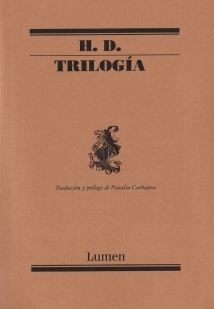What do you think?
Rate this book


421 pages, Paperback
First published January 1, 1973
Annael--this was another voice,and this appears elsewhere in the work, such as in section sixteen of The Flowering of the Rod: "I am Mary--O, there are Marys-a-plenty,/(though I am Mara, bitter) I shall be Mary-myrrh". H.D.'s writing is powerful and the poetry is generally elegant and poetic. The lapses out of song may be as much my fault for reading in a bad place or at a bad time as hers for having inconsistent musicality, and her emotional connection to the work is obvious, although I could not feel it as I have in so many other poems (including--to a point--"The Waste Land", which was compared to Trilogy in the introduction).
hardly a voice, a breath, a whisper,
and I remembered bell-notes
Azrael, Gabriel, Raphael,
as when in Venice, one of the campanili
speaks and another answers,
until it seems the whole city (Venice-Venus)
will be covered with gold pollen shaken
from the bell-towers, lilies plundered
with the weight of massive bees...
Thoth, Hermes, the stylus,
the palette, the pen, the quill endure,
though our books are a floor
of smouldering ash under our feet;
though the burning of the books remains
the most perverse gesture
and the meanest
of man's mean nature,
yet give us, they still cry,
give us books...
- The Walls Do Not Fall, 9
Thou shalt have none other gods but me;
not on the sea
shall we entreat Triton or Dolphin,
not on the land
shall we lift rapt face and clasp hands
before laurel or oak-tree,
not in the sky
shall we invoke separately
Orion or Sirius
or the followers of the Bear,
not in the higher air
of Algorab, Regulus or Deneb
shall we cry
for help - or shall we?
- The Walls Do Not Fall, 37
trembling at a known street-corner,
we know not nor are known;
the Pythian pronounces - we pass on
to another cellar, to another sliced wall
where poor utensils show
like rare objects in a museum;
Pompeii has nothing to teach us,
we know crack of volcanic fissure,
slow flow of terrible lava,
pressure on heart, lungs, the brain
about to burst its brittle case
(what the skull can endure!):
over us, Apocryphal fire,
under us, the earth sway, dip of a floor,
slop of pavement
where men roll, drunk
with a new bewilderment,
sorcery, bedevilment...
- The Walls Do Not Fall, 1